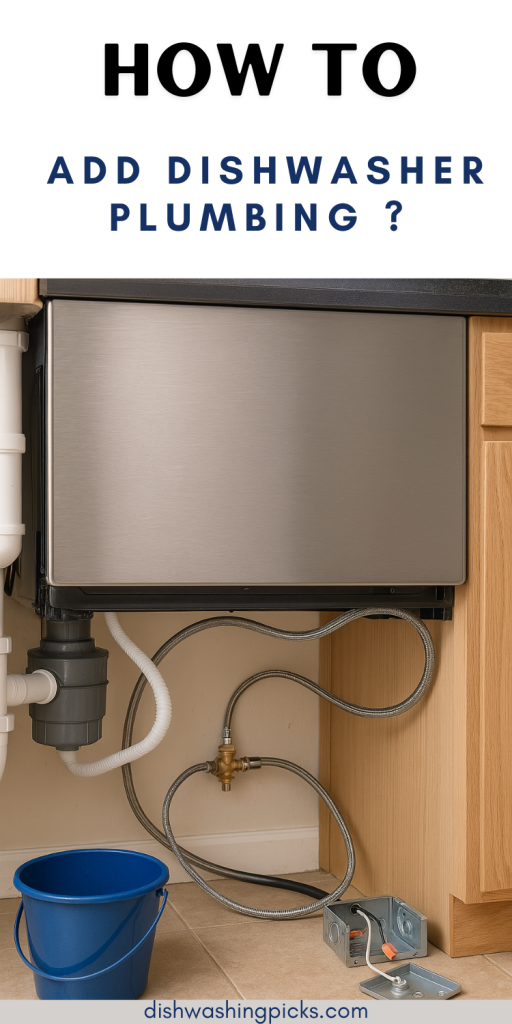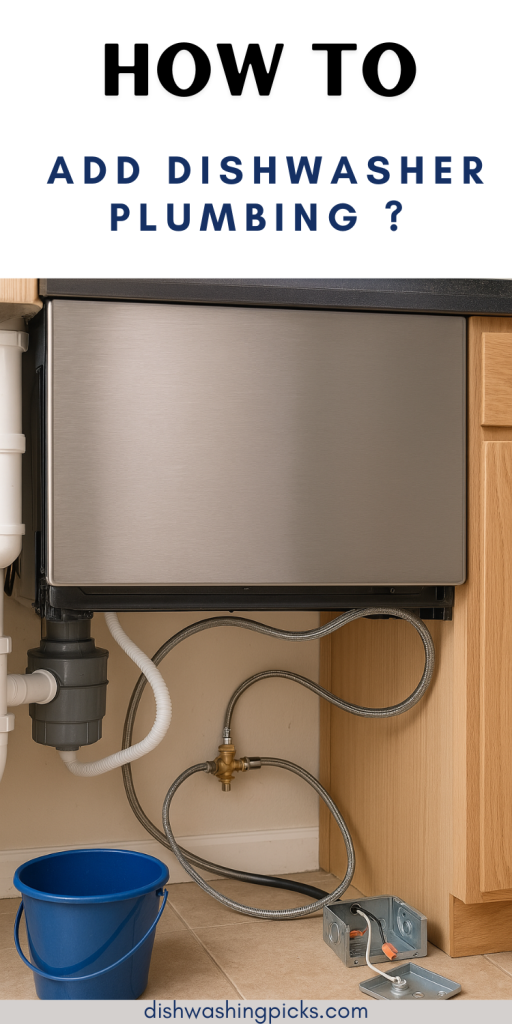
So, you’ve finally decided: it’s time to stop hand-washing every single dish like it’s 1983. Maybe you got a shiny new dishwasher… or found one on sale that was too good to pass up. Now comes the fun part (read: mildly terrifying): hooking it up to the plumbing.
But hey—breathe. You don’t have to be a professional plumber, and no, you don’t need to call your uncle who once fixed a sink in 2007. We’re gonna walk through this together, nice and easy. Deal? Cool.
First Things First: Where’s Your Dishwasher Gonna Go?
Before you even grab a wrench, take a second and scope out the spot. If you’re replacing an old dishwasher, you’re already halfway there. If it’s a brand-new install (like, no dishwasher has ever lived there before), then you’ll need a water line, a drain line, and power — all within reach.
Quick questions to ask yourself:
- Is it next to the sink? That’s ideal — because your sink’s plumbing is gonna be the easiest connection point.
- Got a cabinet between the sink and the dishwasher? You might need to drill a small hole to run your lines through. Nothing scary, promise.
Once you’ve got the location sorted, you’re ready to move on.
The Tools You’ll Probably Need
Don’t worry, you won’t need a full tool chest. Just a few basics:
- Adjustable wrench (your new best friend)
- Teflon tape (aka plumber’s tape)
- Bucket or towel (just in case things get splashy)
- Drill (if you need to make holes between cabinets)
- Dishwasher installation kit (most hardware stores sell these and they include everything—super convenient)
Optional but nice to have: a flashlight and a lot of patience.
Connecting the Water Supply: AKA, The Part That Sounds Hard But Isn’t
Okay, this is where most people start sweating. But honestly? It’s just a hose.
Here’s the breakdown:
- Turn off the water. Usually there’s a valve under the sink. Twist it clockwise until it stops.
- Find the hot water supply. You’ll need to connect the dishwasher to the hot water line (not cold—your dishes aren’t trying to go for a polar plunge).
- Use a dual outlet valve or tee adapter. This lets you split the hot water line so your sink and your dishwasher can share without fighting over it.
- Attach the water inlet hose. One end goes to the valve, the other end to the dishwasher. Tighten with your wrench. Not too Hulk-like—just snug.
Wrap the threads in Teflon tape to help prevent leaks. Pro tip: a little goes a long way.
Time to Hook Up the Drain Line
Now let’s talk about where that dirty water’s gonna go. You don’t want it flooding your kitchen floor, right? Cool. Here’s how you handle it:
- Find your garbage disposal or sink drain pipe. Most people hook the drain hose to either of these.
- Use a high loop or air gap. This is important. It keeps gross sink water from flowing back into your dishwasher. You can loop the hose up high under the sink or use a little thing called an air gap that installs on your sink deck.
- Connect the hose. Secure it to the disposal or drain pipe using a clamp. Tighten it so it’s snug but don’t crush the hose.
Give the hose a gentle tug after to make sure it won’t pop off mid-cycle and spray your kitchen like a water park.
Electrical Hookup – If Your Dishwasher Doesn’t Just Plug In
Some dishwashers plug into an outlet under the sink. If that’s the case? Sweet. You just plug it in and move on with your life.
If it’s a hardwired situation, though:
- Turn off power at the breaker. Like, seriously, make sure it’s OFF.
- Open the junction box on the dishwasher. It’s usually at the front bottom.
- Connect black to black, white to white, and ground to green or bare wire.
- Use wire nuts and electrical tape. You want everything secure and neat.
Close the box, double-check everything, and you’re golden.
Test Time: Did We Nail It?
Alright, deep breath. Let’s see if it works:
- Turn on the water.
- Flip the breaker back on or plug the unit in.
- Run a short cycle.
Watch and listen. Any leaks? Weird noises? Water not draining? If everything sounds smooth and you’re not seeing puddles — congrats, you did it!
Even if something’s off, no worries. Most of the time it’s a loose connection or a missed step, and you can totally troubleshoot it.
Finally: You’re Basically a Plumbing Pro Now
Okay, maybe not a licensed one… but close. Adding dishwasher plumbing sounds like a whole thing, but once you break it down, it’s just a series of logical steps. A hose here, a clamp there, a few turns of a wrench, and boom — sparkling dishes without lifting a finger.
So next time someone says “Oh wow, you installed that yourself?” — just smile, sip your coffee, and say “Yup. No big deal.”


So helpful. You’re a godsend – the tone was exactly what I needed (possibly more than the actual instructions)
Glad we could help Jake, at your service at any time.